|
SoICT 2014
E-Updates
|
| >
Click here for the latest conference
information
|
|
Technical Sponsor:
|
|
|
|
Financial
Sponsors:
|
|
|
|
|
ghghj |
sdfsadf
|
IMPORTANT DATES:
|
|
> SUBMISSION DEADLINE
July 26
August 17, 2014
> AUTHOR NOTIFICATION
September 06
September 21, 2014
> CAMERA-READY SUBMISSION
October 5, 2014 October 15, 2014
> REGISTRATION DEADLINE
(For each accepted
papper!)
21 October
2014
> CONFERENCE DATES
4-5 December 2014
|
|
|
|
Keynote Talks for IIWAS and SOICT
Gabriele KOTSIS
Department of Telekooperation
Johannes Kepler University Linz
Dumb Web, Smart Web, Knowledgable Web
Abstract
In February 2011, Watson (IBM super computer) managed to beat two past grand
champions on the TV quiz show Jeopardy!. Watson was able to answer questions that require
intelligence when done by humans. This marked the first machine to pass the Turing test and started
a new era of computing called cognitive computing where computers (modeled after the human brain)
learn and interact naturally with people to extend what either humans or machine could do on their
own. Google, Amazon, Facebook, etc., using big data technologies, smart Machine Learning and AI
algorithms were able to tap into our intensions by predicting what we click, buy, like, dislike,
shop, surf, etc.,. This marked the era of smart Web or predictive intelligence where Turing test is
reversed and machines now try to figure out who we are, our information needs, our behavioral
patterns, the activities we are engaged in and our goals. Together with the torrents of data we
leave behind us every time we communicate with the digital eco-system, a new era of human-machine
cooperation is starting that gives us millions of potential insights into user experience,
marketing, personal tastes, and human behavior. In this talk, we are going to illustrate through
motivating cases and research directions the main characteristics of this era and how it can
transform the way we interact with the Web to ultimately improve the quality of our lives and gain
valuable insights into our affective, mental and physical states.
Biography
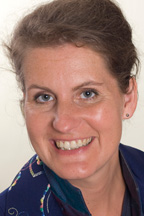 Gabriele Kotsis was born on October 29th, 1967, in Vienna, Austria.
She received her masters degree (1991, honored with the Award of the Austrian Computer Society), her
PhD (1995, honored with the Heinz-Zemanek Preis) and the venia docendi in computer science (2000)
from the University of Vienna.
She was working as a researcher and teacher at the University of Vienna (1991-2001), at the Vienna
University for Economics and Business Administration (2001) and at the Copenhagen Business School
(2002).
Since December 2002 she is holding a full professor position at the Telecooperation Department at
the Johannes Kepler University of Linz. Her research interests include performance management of
computer systems and networks, workgroup computing, mobile and internet computing, telemedia and
telecooperation. Prof. Kotsis is author of numerous publications in international conferences and
journals and is co-editor of several books. From April 2003 to April 2007 she was president of the
Austrian Computer Society. Since October 2007 she is vice rector for research at the JKU Linz.
Gabriele Kotsis was born on October 29th, 1967, in Vienna, Austria.
She received her masters degree (1991, honored with the Award of the Austrian Computer Society), her
PhD (1995, honored with the Heinz-Zemanek Preis) and the venia docendi in computer science (2000)
from the University of Vienna.
She was working as a researcher and teacher at the University of Vienna (1991-2001), at the Vienna
University for Economics and Business Administration (2001) and at the Copenhagen Business School
(2002).
Since December 2002 she is holding a full professor position at the Telecooperation Department at
the Johannes Kepler University of Linz. Her research interests include performance management of
computer systems and networks, workgroup computing, mobile and internet computing, telemedia and
telecooperation. Prof. Kotsis is author of numerous publications in international conferences and
journals and is co-editor of several books. From April 2003 to April 2007 she was president of the
Austrian Computer Society. Since October 2007 she is vice rector for research at the JKU Linz.
Edgar WEIPPL
SBA Research
Vienna University of Technology
Abstract
Social Engineering has long been a very effective means of attacking
information systems. The term knowledge worker has been coined by Peter Drucker more than 50 years ago
and still describes very well
the basic characteristics of many employees. Today, with current hypes such as BYOD (bring your own
device)
and public cloud services, young professionals expect to use the same technology both in their private
life
and while working. In global companies teams are no longer geographically co-located but staffed
globally
just-in-time. The decrease in personal interaction combined with the plethora of tools used (E-Mail, IM,
Skype, Dropbox, Linked-In, Lync, etc.) create new opportunities for attackers. As recent attacks on
companies such as the New York Times, RSA or Apple have shown, targeted spear-phishing attacks are an
effective evolution of social engineering attacks. When combined with spear phishing to distribute
zero-day-exploits they become a dangerous weapon, often used by advanced persistent threats. In this
talk we
will explore some attack vectors and possible steps to mitigate the risk.
Biography
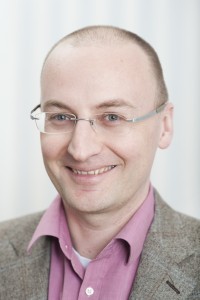 After graduating with a Ph.D. from the Vienna University of Technology, Edgar worked for two years in a
research startup.
He then spent one year teaching as an assistant professor at Beloit College, WI. From 2002 to 2004,
while
with the software vendor, he worked as a consultant in New York, NY and Albany, NY, and in Frankfurt,
Germany.
In 2004 he joined the Vienna University of Technology and founded together with A Min Tjoa and Markus
Klemen
the research center SBA Research.
Edgar R. Weippl (CISSP, CISA, CISM, CRISC, CSSLP, CMC) is member of the editorial board of Computers &
Security (COSE) and he organizes the ARES conference.
After graduating with a Ph.D. from the Vienna University of Technology, Edgar worked for two years in a
research startup.
He then spent one year teaching as an assistant professor at Beloit College, WI. From 2002 to 2004,
while
with the software vendor, he worked as a consultant in New York, NY and Albany, NY, and in Frankfurt,
Germany.
In 2004 he joined the Vienna University of Technology and founded together with A Min Tjoa and Markus
Klemen
the research center SBA Research.
Edgar R. Weippl (CISSP, CISA, CISM, CRISC, CSSLP, CMC) is member of the editorial board of Computers &
Security (COSE) and he organizes the ARES conference.
Jean-Marc JEZEQUEL
IRISA
University of Rennes
Domain Specific Languages: From Craft to Engineering
Abstract
The engineering of systems involves many different stakeholders, each with
their own domain
of expertise.
Hence more and more organizations are developing an ever growing number of Domain Specific Languages
(DSLs)
to allow domain experts to express solutions directly in terms of relevant domain concepts.
This new trend raises new challenges about designing not just one DSL but many of them, evolving a set
of
DSLs and coordinating the use of multiple DSLs. In this talk we explore various dimensions of these
challenges, and outline a possible research roadmap for addressing them.
We detail one of these challenges, which is the safe reuse of model transformations.
Indeed both DSL definition and tooling (eg. checkers, document or code generators, model
transformations)
require significant development efforts, for a limited audience (by definition), because the current
state
of the art of Model Driven Engineering still makes it hard to reuse and evolve these definitions and
tooling
across several DSLs, even when these DSLs are conceptually very close to one other. We outline a new
extension to the Kermeta language that leverages Family Polymorphism to allow model polymorphism,
inheritance among DSLs, as well as evolution and interoperability of DSLs.
Biography
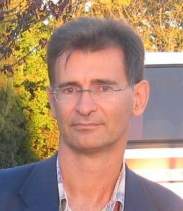 Jean-Marc JEZEQUEL is a Professor at the University of Rennes and Director of IRISA, the largest public
research lab in Informatics in France.
His interests include model driven software engineering for software product lines, and specifically
component based, dynamically adaptable systems with quality of service constraints, including
reliability,
performance, timeliness etc.
He is the author of several books published by Addison-Wesley and of more than 200 publications in
international journals and conferences.
He was a member of the steering committees of the AOSD and MODELS conference series. He also served on
the
editorial boards of IEEE Computer, IEEE Transactions on Software Engineering, the Journal on Software
and
Systems, on the Journal on Software and System Modeling and the Journal of Object Technology.
He received an engineering degree in Telecommunications from ENSTB in 1986, and a Ph.D. degree in
Computer
Science from the University of Rennes, France, in 1989.
Jean-Marc JEZEQUEL is a Professor at the University of Rennes and Director of IRISA, the largest public
research lab in Informatics in France.
His interests include model driven software engineering for software product lines, and specifically
component based, dynamically adaptable systems with quality of service constraints, including
reliability,
performance, timeliness etc.
He is the author of several books published by Addison-Wesley and of more than 200 publications in
international journals and conferences.
He was a member of the steering committees of the AOSD and MODELS conference series. He also served on
the
editorial boards of IEEE Computer, IEEE Transactions on Software Engineering, the Journal on Software
and
Systems, on the Journal on Software and System Modeling and the Journal of Object Technology.
He received an engineering degree in Telecommunications from ENSTB in 1986, and a Ph.D. degree in
Computer
Science from the University of Rennes, France, in 1989.
Brigitte JAUMARD
Computer Science and Software Engineering (CSE) Department
Concordia University
Resilient Optical Network Virtualization
Abstract
Cloud computing services are emerging as an essential component of the industry ICT infrastructure and,
consequently, one of the fastest growing business opportunities for Internet infrastructure and service
providers. Many enterprises are moving their services towards cloud infrastructures. In this rapidly
growing market, datacenter (DC) scalability is becoming a major technical challenge for service
providers as well as its performance optimization, with a key focus on the network technologies and
their control. In fact, service providers have to cope with cloud services delivered by more and more
geographically distributed DCs, ever increasing requests by users and DC providers for very high
throughputs and low latencies, resource dynamicity and elasticity (i.e. flexible storage and computing
on demand) and seamless resource/service migration. The future Internet architecture needs to offer:
- An efficient integration between the high-performance and high-bandwidth optical network
infrastructure
of operators and services/resources provided by DCs and server farms.
- End-to-end cloud service provisioning eco-system that automatically and efficiently bundles DC
infrastructure services (i.e. computing and storage) with the required operator optical network
connectivity services.
- A highly resilient virtual infrastructure as a major disadvantage of a virtual architecture is that
a
single hardware fault or a defect in the virtualization infrastructure (VI) software can lead to the
failure of multiple virtual nodes by, for example, preventing VMs from being scheduled or preventing
VMs
from accessing I/O devices. Hence, a key to enabling the deployment of virtual clusters is to
enhance
the resiliency of the VI to faults in the hardware or virtualization software.
Biography
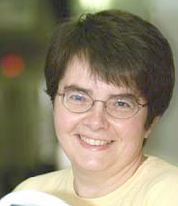 Brigitte JAUMARD holds a Concordia University Research Chair, Tier 1, on the Optimization of
Communication
Networks in the Computer Science and Software Engineering (CSE) Department at Concordia University.
Her research focuses on mathematical modeling and algorithm design for large-scale optimization problems
arising in communication networks, transportation networks and artificial intelligence.
Recent studies include the design of the most efficient algorithms for p-cycle based protection schemes,
under static and dynamic traffic, and their generalization to the so-called p-structures, which
encompass
all previously proposed pre-cross-connected preconfigured protection schemes. Other recent studies deal
with
dimensioning, provisioning and scheduling algorithms in optical grids or clouds, in broadband wireless
networks and in passive optical networks. In Artificial Intelligence, contributions include the
development
of efficient optimization algorithms for probabilistic logic (reasoning under uncertainty) and for
automated
mechanical design in social networks (design of trust estimator tools). In transportation, her recent
contributions include new algorithms for freight train scheduling and locomotive assignment. B. Jaumard
has
published over 300 papers in international journals in Operations Research and in Telecommunications.
Brigitte JAUMARD holds a Concordia University Research Chair, Tier 1, on the Optimization of
Communication
Networks in the Computer Science and Software Engineering (CSE) Department at Concordia University.
Her research focuses on mathematical modeling and algorithm design for large-scale optimization problems
arising in communication networks, transportation networks and artificial intelligence.
Recent studies include the design of the most efficient algorithms for p-cycle based protection schemes,
under static and dynamic traffic, and their generalization to the so-called p-structures, which
encompass
all previously proposed pre-cross-connected preconfigured protection schemes. Other recent studies deal
with
dimensioning, provisioning and scheduling algorithms in optical grids or clouds, in broadband wireless
networks and in passive optical networks. In Artificial Intelligence, contributions include the
development
of efficient optimization algorithms for probabilistic logic (reasoning under uncertainty) and for
automated
mechanical design in social networks (design of trust estimator tools). In transportation, her recent
contributions include new algorithms for freight train scheduling and locomotive assignment. B. Jaumard
has
published over 300 papers in international journals in Operations Research and in Telecommunications.
Invited Speaker for SOICT
Hoong Chuin LAU
School of Information Systems
Singapore Management University
Last-Mile Delivery in Smart Cities
Abstract
Logistics and transportation are two very aspects in smart city development.
This talk is in 2 parts. I will discuss the challenges of urban logistics, more specifically in the
context
of last-mile delivery of freight into mega-cities like Singapore. I will first present several case
studies
in Europe and Asia on the operation of Urban Consolidation Centers (UCCs) which enable collaboration
among
shippers, carriers, and retailers to consolidate deliveries. I will then discuss my research on market
mechanisms and system that provide the necessary technology and incentives for multiple stakeholders to
derive win-win benefits from operating within UCCs.
In the second part, I will discuss last-mile delivery of passengers from a transport hub (such as a
major
train/bus station) to their homes. I will discuss viable approaches from different urban cities in Asia
and
Europe. Then, I will discuss my research on last mile transportation. More specifically, I will present
2-level planning framework for making real-time clustering and routing decisions. The first
upper/strategic
level selects, from the set of current requests, the ones to be scheduled in a given period, which can
be
modelled and solved as Markov decision process (MDP). The second lower/operational level clusters and
then
routes the selected requests using a standard vehicle routing heuristic.
Biography
 Hoong Chuin LAU is Professor of Information Systems and Deputy Director of the Living Analytics Research
Centre at the Singapore Management University. Prior to joining SMU, he was a research scientist at the
Institute of Infocomm Research in Singapore, and an assistant professor at the School of Computing,
National
University of Singapore.
His research in the interface of Artificial Intelligence and Operations Research has been widely applied
to
decision support and optimization, and has contributed to advances of algorithms and applications to a
variety of complex resource planning and scheduling problems in logistics, transportation, tourism and
health-care. At SMU, he was awarded the SMU Lee Kwan Yew Research Fellowship for research excellence in
2008. He currently serves on the editorial board of the IEEE Transactions on Automation Science and
Engineering and guest editors in the Journal of Heuristics and Web Intelligence and Agent Systems
Journal.
He has been involved in consulting projects in logistics and transportation, for companies such as DHL,
Bax
Global, PSA, EADS, ST Dynamics, and various government agencies. He is a chartered member of the
Chartered
Institute of Logistics and Transportation, and currently serves on the CILT (Singapore) board of
directors.
For his work with the Singapore Ministry of Defense, he won the National Innovation and Quality
Convention
Star Award in 2006, and was nominated for the prestigious Defense Technology Prize (individual category)
in
2007.
A recipient of two Singapore government scholarships, Hoong Chuin obtained his Doctorate of Engineering
degree in Computer Science from the Tokyo Institute of Technology (Japan) in 1996, and BSc and MSc
degrees
in Computer Science from the University of Minnesota (Minneapolis).
Hoong Chuin LAU is Professor of Information Systems and Deputy Director of the Living Analytics Research
Centre at the Singapore Management University. Prior to joining SMU, he was a research scientist at the
Institute of Infocomm Research in Singapore, and an assistant professor at the School of Computing,
National
University of Singapore.
His research in the interface of Artificial Intelligence and Operations Research has been widely applied
to
decision support and optimization, and has contributed to advances of algorithms and applications to a
variety of complex resource planning and scheduling problems in logistics, transportation, tourism and
health-care. At SMU, he was awarded the SMU Lee Kwan Yew Research Fellowship for research excellence in
2008. He currently serves on the editorial board of the IEEE Transactions on Automation Science and
Engineering and guest editors in the Journal of Heuristics and Web Intelligence and Agent Systems
Journal.
He has been involved in consulting projects in logistics and transportation, for companies such as DHL,
Bax
Global, PSA, EADS, ST Dynamics, and various government agencies. He is a chartered member of the
Chartered
Institute of Logistics and Transportation, and currently serves on the CILT (Singapore) board of
directors.
For his work with the Singapore Ministry of Defense, he won the National Innovation and Quality
Convention
Star Award in 2006, and was nominated for the prestigious Defense Technology Prize (individual category)
in
2007.
A recipient of two Singapore government scholarships, Hoong Chuin obtained his Doctorate of Engineering
degree in Computer Science from the Tokyo Institute of Technology (Japan) in 1996, and BSc and MSc
degrees
in Computer Science from the University of Minnesota (Minneapolis).
A Min TJOA
Institute of Software Technology and Interactive Systems
Vienna University of Technology
Exploring Linked Statistical Data Using Linked Widgets
Abstract
The Open Data movement has gained momentum among governments, in the business
world, and in
the public sector over the last few years. The result of this movement is a growing number of open and
accessible datasets that have established a solid basis for offering enhanced services and improved
experiences to citizens and business. The statistical data, which embodies a big portion of Open Data,
comprises a wide range of domains including finance, demographics, transportation, employment, etc.
Statistical data plays an increasingly important role in public policy formation and as a facilitator
for
informed decision-making in the private sector.
In this context, Linked Statistical Data is an evolving domain that combines the power of Linked Data (a
set
of best practices for publishing and connecting structured data on the Web) with open statistical data
in
order to empower linkage of relevant data and concepts from different resources. In this talk, the
Linked
Statistical Data limitations and challenges for knowledge workers will be explored and then the
innovative
concept of Linked Widgets will be presented which is aiming to bridge the knowledge gap between
statistical
data publishers and knowledge workers who consume the statistical data.
Biography
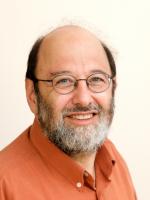 Professor Dr. A Min Tjoa has been a full professor and director of the Institute of Software Technology
and
Interactive Systems at the Vienna University of Technology since 1994. He is the chairman of the
Austrian
National Competence Center for Security Research (“Competence Centers for Excellent Technologies
Initiative”
of the Austrian government).
He was visiting professor at the Universities of Zurich, Kyushu and Wroclaw (Poland) and at the
Technical
Universities of Prague and Lausanne (Switzerland). From 1999 to 2003, he was the president of the
Austrian
Computer Society. He is vice-chairman of the IFIP Technical Committee for Information Systems and
chairman
of the IFIP Working Group on Enterprise Information Systems. Member of the Board (Senate) of the
Christian
Doppler Foundation for the establishment of high-technology transfer labs in Austria. He is also the
University of Technology’s Coordinator of the ASEA-UNINET (ASEAN-EU University Network) and
Vice-Chairman of
the DEXA Association (Database and Expert System Applications).
He has served as chairman of several international conferences including the IEEE Int. Conf. on
Distributed
Computing Systems (ICDCS), European Software Engineering Conference (ESEC), ACM SIGSOFT Symposium on the
Foundations of Software Engineering (FSE), the International Conference on Database and Expert Systems
Applications (DEXA), the International Conference on Electronic Commerce and Web Technologies (EC-Web).
He
was Honorary Chairman of the International Conference on Very Large Databases (VLDB 2007).
In 2011 he received the honorary doctoral degree (Dr. h. c.) from the Czech Technical University in
Prague
and the honorary professor degree of the University of Hue (Vietnam).
He is currently member of the Council of Doctoral Studies in Mathematics, Informatics and
Telecommunication
(Conseil de l’ Ecole Doctorate Mathématique, Informatique et Telecommunications de Toulouse) which
covers
all universities in the Toulouse area.
His current research focus areas are data warehousing, cloud computing, semantic web, security, and
non-standard IT- applications. He has published more than 200 peer reviewed articles in journals and
conferences.
Professor Dr. A Min Tjoa has been a full professor and director of the Institute of Software Technology
and
Interactive Systems at the Vienna University of Technology since 1994. He is the chairman of the
Austrian
National Competence Center for Security Research (“Competence Centers for Excellent Technologies
Initiative”
of the Austrian government).
He was visiting professor at the Universities of Zurich, Kyushu and Wroclaw (Poland) and at the
Technical
Universities of Prague and Lausanne (Switzerland). From 1999 to 2003, he was the president of the
Austrian
Computer Society. He is vice-chairman of the IFIP Technical Committee for Information Systems and
chairman
of the IFIP Working Group on Enterprise Information Systems. Member of the Board (Senate) of the
Christian
Doppler Foundation for the establishment of high-technology transfer labs in Austria. He is also the
University of Technology’s Coordinator of the ASEA-UNINET (ASEAN-EU University Network) and
Vice-Chairman of
the DEXA Association (Database and Expert System Applications).
He has served as chairman of several international conferences including the IEEE Int. Conf. on
Distributed
Computing Systems (ICDCS), European Software Engineering Conference (ESEC), ACM SIGSOFT Symposium on the
Foundations of Software Engineering (FSE), the International Conference on Database and Expert Systems
Applications (DEXA), the International Conference on Electronic Commerce and Web Technologies (EC-Web).
He
was Honorary Chairman of the International Conference on Very Large Databases (VLDB 2007).
In 2011 he received the honorary doctoral degree (Dr. h. c.) from the Czech Technical University in
Prague
and the honorary professor degree of the University of Hue (Vietnam).
He is currently member of the Council of Doctoral Studies in Mathematics, Informatics and
Telecommunication
(Conseil de l’ Ecole Doctorate Mathématique, Informatique et Telecommunications de Toulouse) which
covers
all universities in the Toulouse area.
His current research focus areas are data warehousing, cloud computing, semantic web, security, and
non-standard IT- applications. He has published more than 200 peer reviewed articles in journals and
conferences.
Mohamed Faouzi ATIG
Department of Information Technology
Uppsala University, Sweden
Mending Fences under Weak memory Models
Abstract
This talk is devoted to the automatic verification and correction of
concurrent programs running under weak
memory models. These models capture the reordering of program (read and write) operations done by modern
multi-processor architectures and compilers for performance reasons. Thus, the programs may exhibit
behaviours that deviate substantially from their behaviours under the usual Sequentially Consistent (SC)
(i.e., interleaving) semantics. The standard way to eliminate the undesired behaviours is to insert
memory
fences (or barriers) instructions that typically prevent reordering of some instructions issued before
and
after the fence.
An important problem in concurrent programming is to find sets of fences that ensure the program
correctness
without compromising efficiency. This is an important and crucial problem for the correctness of
concurrency
libraries and other performance-critical system services employing lock-free synchronization, as well as
for
the correctness of compiler backends that generate code targeted to run on such architectures.
In this talk, we consider the most common model resulting from the "write to read" relaxation, which
corresponds to the TSO (Total Store Ordering) model. This relaxation is used in most hardware
architectures
available today. We define abstract operational models for this weak memory model based on state
machines
with (potentially unbounded) FIFO buffers. Then, we investigate the decidability and the complexity of
checking safety properties for programs under TSO memory models. Finally, we present an algorithm that
produces an optimal set of fences needed to ensure the program correctness with respect to a safety
property. The algorithm is counter-example guided, using counter-examples that are produced by checking
safety properties of programs running under TSO memory models.
Biography
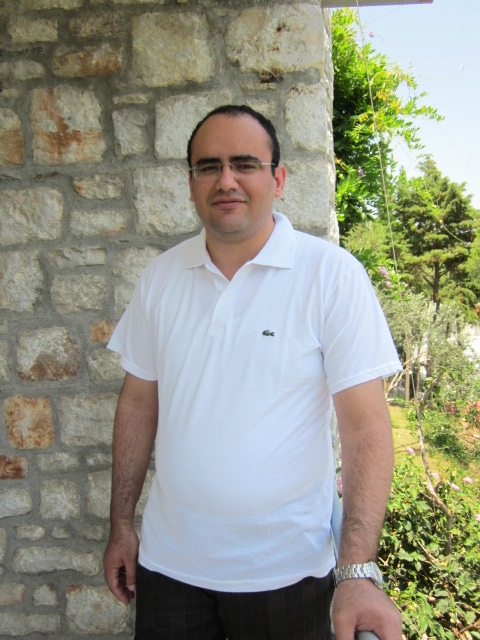 Mohamed Faouzi Atig is an assistant professor at Uppsala University, Sweden. He has received his
doctoral
degree in Computer Science in 2010 from the University of Paris Diderot- Paris 7 (France) under the
supervision of Prof. Ahmed Bouajjani and Dr. Tayssir Touili.
From 2010 to 2012, he was a post-doctoral researcher at Uppsala University (Sweden) where he has worked
within the UPMARC project on developing algorithms and tools for the automatic verification of multicore
systems.
Dr. Mohamed Faouzi's research is focused on developing techniques based on formal methods for the
verification of parallel programs running under different memory models. Besides being the principal
author
of many scientific publications, Mohamed Faouzi has also served as program committee member for several
international conferences.
Mohamed Faouzi Atig is an assistant professor at Uppsala University, Sweden. He has received his
doctoral
degree in Computer Science in 2010 from the University of Paris Diderot- Paris 7 (France) under the
supervision of Prof. Ahmed Bouajjani and Dr. Tayssir Touili.
From 2010 to 2012, he was a post-doctoral researcher at Uppsala University (Sweden) where he has worked
within the UPMARC project on developing algorithms and tools for the automatic verification of multicore
systems.
Dr. Mohamed Faouzi's research is focused on developing techniques based on formal methods for the
verification of parallel programs running under different memory models. Besides being the principal
author
of many scientific publications, Mohamed Faouzi has also served as program committee member for several
international conferences.
|
|
| |
Copyright © 2014 SoICT; Contact webmaster
The website is optimized for Mozilla Firefox with a screen resolution of 1024x768
|
